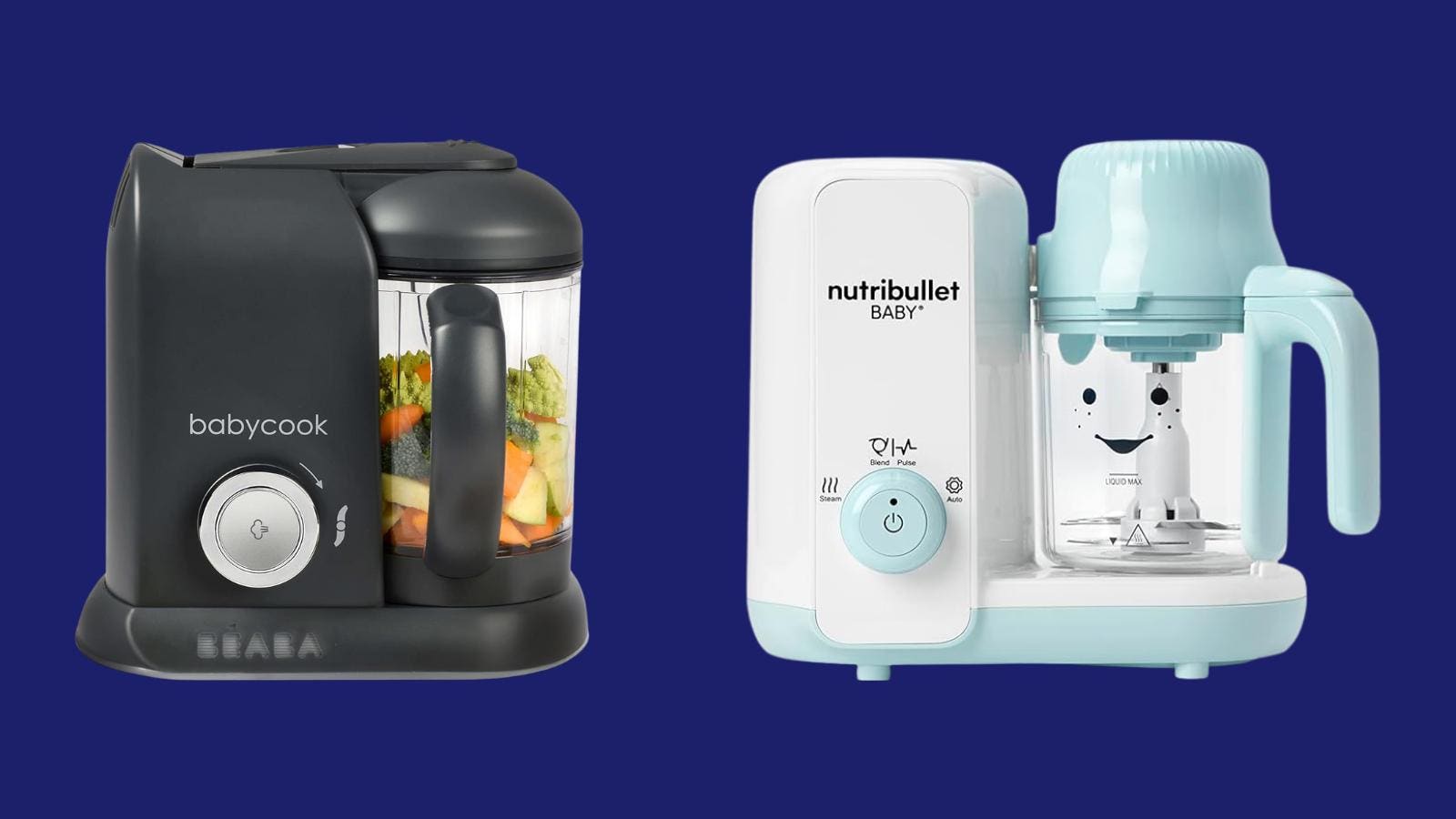
- Share to Facebook
- Share to Twitter
- Share to Linkedin
I always enjoyed making homemade baby food for my kids because I knew exactly what was going into their food, and I could control the consistency and texture. The best baby food maker can make prepping their food a breeze by combining features like steaming and pureeing, and simplifying cleanup by having dishwasher-safe parts or self-cleaning features. My top pick, the Beaba Babycook Solo steam cooks, purees, thaws and reheats baby food, and it has a large cup so you can make a big batch of food at once. Plus, it has a one-button operation, making the entire process super easy.
“Baby food makers also make it easier to delay the introduction to sweet and salty flavors, since you can decide what to put in them,” says registered dietitian Jennifer Anderson. “It can also make it easier to expose the baby to the exact flavors of foods in the home, which may be different than what is available in purchased baby food.” To help you begin the journey into feeding your baby solid food, we selected some of the best baby food makers from the Nuby Mighty Blender, which is an intuitive option that blends and chops, to the Oxo Tot Mash Maker Baby Food Mill, which is ideal for making baby food on the go. Below, find our other top picks.
Why Trust Forbes Vetted
The Forbes Vetted baby and kids gear team is comprised of a dedicated team of parents, journalists and editors who have combined decades of experience covering parenting topics.
- The author of this article, Alicia Betz, is a mom to three who has experience making homemade baby food. She frequently covers topics pertinent to parents and caregivers of babies, including the best sleep sacks and the best baby books.
- The editor of this article, Esther Carlstone, is also a mom to three and an experienced parenting journalist and editor. She also reports on products that are top of mind for parents of babies, including the best infant life jackets and the best baby pool floats.
- To learn more about baby food makers and how they can be helpful for parents, we interviewed two experts: registered dietitian and founder of Kids Eat In Color, Jennifer Anderson and pediatrician at Bluebird Kids Health, Dr. Amanda Thomas.
How We Chose The Best Baby Food Maker
I considered and compared features and specs of various baby food makers as part of my selection process. Here’s a further peek into how I chose the best baby food makers:
- I compared specs and features such as capacity, function, ease of use and ease of cleaning, giving preference to baby food makers that make life easier for busy parents.
- I considered input from Anderson and Thomas and used their expertise to help learn more about what makes a good baby food maker. I also learned about how baby food makers can help parents provide nutritious meals for their kids.
- I scoured online reviews, considering feedback from parents who have used each baby food maker. I only included options that have a rating of at least 4 out of 5 stars on Amazon.
- Knowing that everyone’s lifestyle is different, I included various types of baby food makers, from those that can do it all at the touch of a button, to a manual mill. I also included options at various prices.
What To Look For In The Best Baby Food Maker
Consider what you’re looking to get out of a baby food maker. If you want to puree the occasional dish, a simpler option might be fine. If you want to make all of your baby’s food, a more robust option is ideal.
Functions
Some baby food makers solely puree food, while others can steam cook, reheat and even self-clean. “Some families care about the ability of a baby food maker to make a smooth puree,” says Anderson. “If you decide to start your baby with pureed foods, your goal should be to move them to table foods as quickly as is appropriate for your child. My team and I like to see babies eating table foods and quickly moving toward mostly table food by around 8 or 9 months.” Keeping this in mind, barring any medical reasons that your child may need to stay on pureed food for longer, you may want to consider a baby food maker that can chop as well as puree.
Thomas also recommends time-saving features such as dishwasher-safe parts and automatic shut-offs.
Materials
Some parents prefer glass containers, so if that’s important to you, look for a glass option. If you choose one with a plastic container, Thomas recommends a BPA-free option. It should also be made of food-grade materials.
Container Size
Most baby food makers have a capacity somewhere between 1.5 and 4.5 cups. If you are planning to make large batches of food that you can freeze for later, a larger capacity baby food maker is better. For the occasional puree, a smaller capacity might be easier to manage.
发表回复